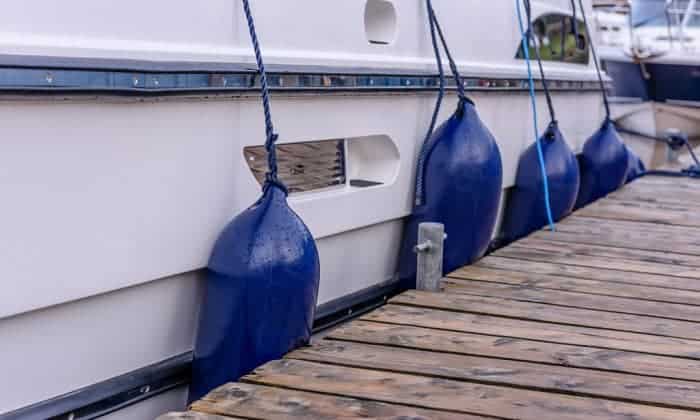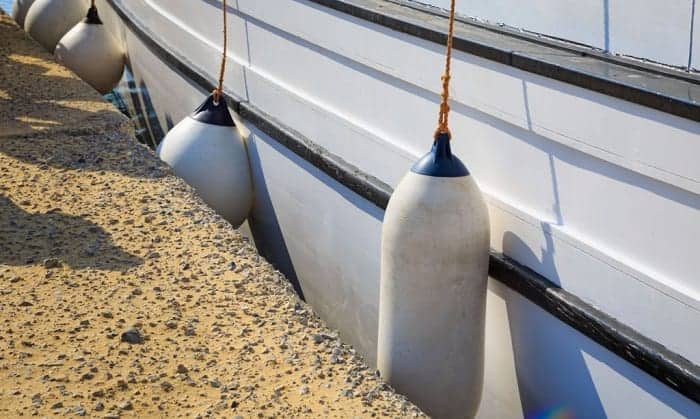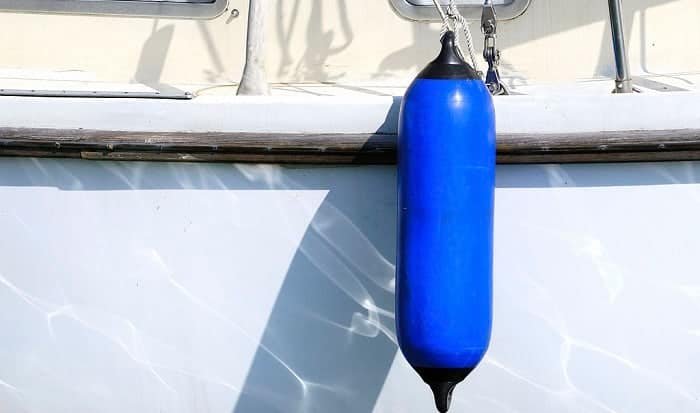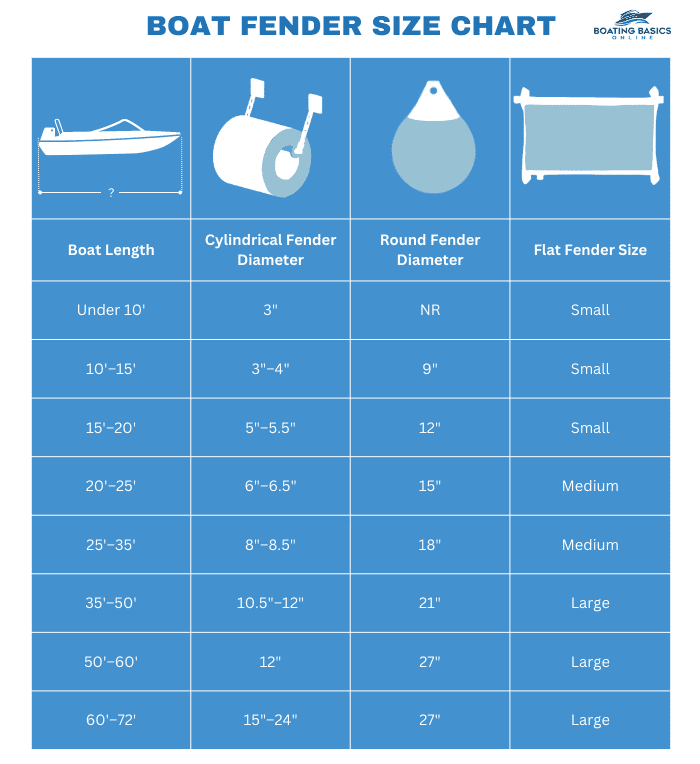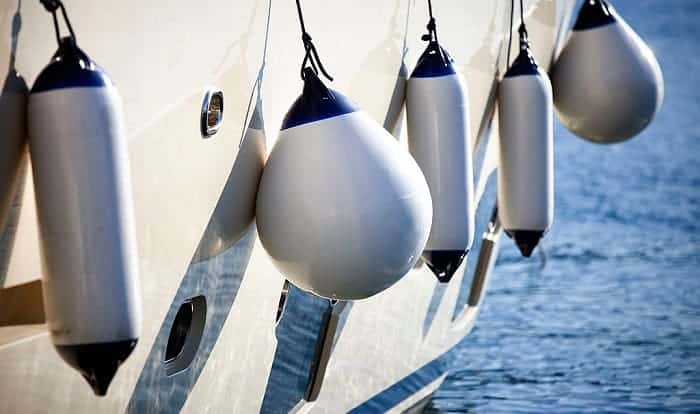Do you want to keep your boat in top shape without spending too much money on maintenance? Having boat fenders can save you from unwarranted damages.
I once had the dilemma of wondering, what size boat fenders do I need? Are these fenders that essential? The more I spend time in my boat, the more I appreciate how these marine accessories save me so much money.
These simple yet very effective fenders absorb bumping energy, keeping my boat free from damages with bumping force at bay. These accessories are not hard to find, and these don’t cost a fortune, too.
Table of Contents
What Are Boat Fenders For?
Boat fenders keep your boat safe from colliding with other vessels. When on the dock, having boat traffic cannot be avoided. Especially during peak hours, a lot of boats can dock at the same time as you. These boat fenders cushion your vessel even from the dock itself and from other ships.
Over time, the marine industry has evolved this accessory to ensure that this prevention technique is foolproof.
What Are the Types of Boat Fenders?
As most boats feature this protective accessory, manufacturers have developed three different types of boat fenders according to the material:
Rubber Fenders
This material is currently the highest demand in the market today. These fenders are great in decreasing reaction force as a boat bumps into another one. It also provides tactical angular guidance on water. Under this type of fender are the following designs:
- Super Cone
- SCK Cell
- Arch
- Leg
- Parallel Motion
- Slide-in Slide-out
- Cylindrical
- Extruded
- Rubbylene
- Marine Bar
- Pneumatic
Foam Fenders
Two layers make the structure of this type. The inner one is polyethylene foam, while it is enclosed with a polyurethane elastomer. Water penetration is practically nil. This type lasts a lifetime as you can still use them, even with damages. Different types of foam fenders are:
- Sea-guard
- Sea-cushion
- Donut
Composite Fenders
A variety of composite materials make up this kind of fender. The heavy-duty tug fenders belong in this category. They surround massive vessels to keep high-impact forces minimal on the boat.
Types of fenders may also vary according to their style. Of course, these styles will offer a wide range of advantages and setbacks, depending on the type of boat that you have.
Round Fenders
This style is best for large boats because these are hard to burst on joint boat impact, incredibly when properly inflated. This type may take a lot of space because of its shape, so this fender is best for those with large storage capacity.
Cylindrical Fenders
This type has been the most popular fender for boats of all sizes. Cylindrical fenders are the traditional ones, and you can hang them in two different ways. The bigger diameter of the cylindrical fender you have, the more protection it offers.
Choosing the right fender is made easy to guide what style is best suited for your boat. You may also consider its color, shape, usage, and size when buying fenders.
What Size Should I Get?
You would always want to get the optimal protection for your boat. The size of the fender is vital to keep impact resistance optimal at all times.
For every 4 to 5 feet in length of your boat, you can have at least 2 inches for round fenders and at least 1 inch for cylindrical ones. You can check the appropriate size of the fender for your boat in a reputable sizing chart.
Besides the length, boat experts also look at the weight and the mooring conditions. Bigger boats may require oversized fenders around. If you moor your vessel in harsh conditions, more prominent fenders are also recommended.
What if I Get the Wrong Size of Boat Fenders?
The wrong size of boat fenders can be hard to handle on the water. Aside from that, fenders that are too small for the vessel, or an insufficient number of fenders can do nothing to protect your boat.
Proper sizing, adequate number, and appropriate placement of this protective equipment around your vessel are the keys to keep them faultless for a long time.
How Many Fenders Should I Get?
A boat can never have enough fenders. But you will need to consider the space for these accessories. Not to mention the boat’s overall aesthetic, since it cannot look like a massive chunk of fenders while on board.
The rule of thumb on the number of fenders is that for every 10-meter vessel, it should at least have two fenders on each side. For boats over 10 meters in length, having 3-4 fenders per side would be sufficient.
Where Should I Attach my Fenders?
The placement of these fenders is critical for boat owners. The areas where the impact may hit your boat are the optimal place for these fenders to be attached. Sites with high chances of damage like scratching and bumping are also recommended. They are usually attached to the handrails or railings. Sometimes, they are also clamped down.
Boat professionals also recommend using a single line intertwined along each fender. A durable fender line is also critical to keep them in place.
Conclusion
Boat fenders are great for keeping your boat damage-free. These protective accessories cushion your boat against bumping on the dock or other vessels.
But aside from having one, the appropriate size is an important thing to note. In the past, I was stuck asking what size boat fenders do I need, but knowing what aspects to consider helped me find the right fenders for my boat.
Optimally protecting your boat with a seamless size is essential so it can resist force adequately. Beyond that, the perfect number and proper placement boost their protective capacity. The excellent condition of your boat will last you a long time if you know how to keep them free from scratches and other damaging constraints while on water.

“I am James Harvey – founder of Boating Basics Online. It is established with the drive to help out first-time boaters, which are those desiring to explore their way through the water. So if you are new to boating, start from here with me. “

